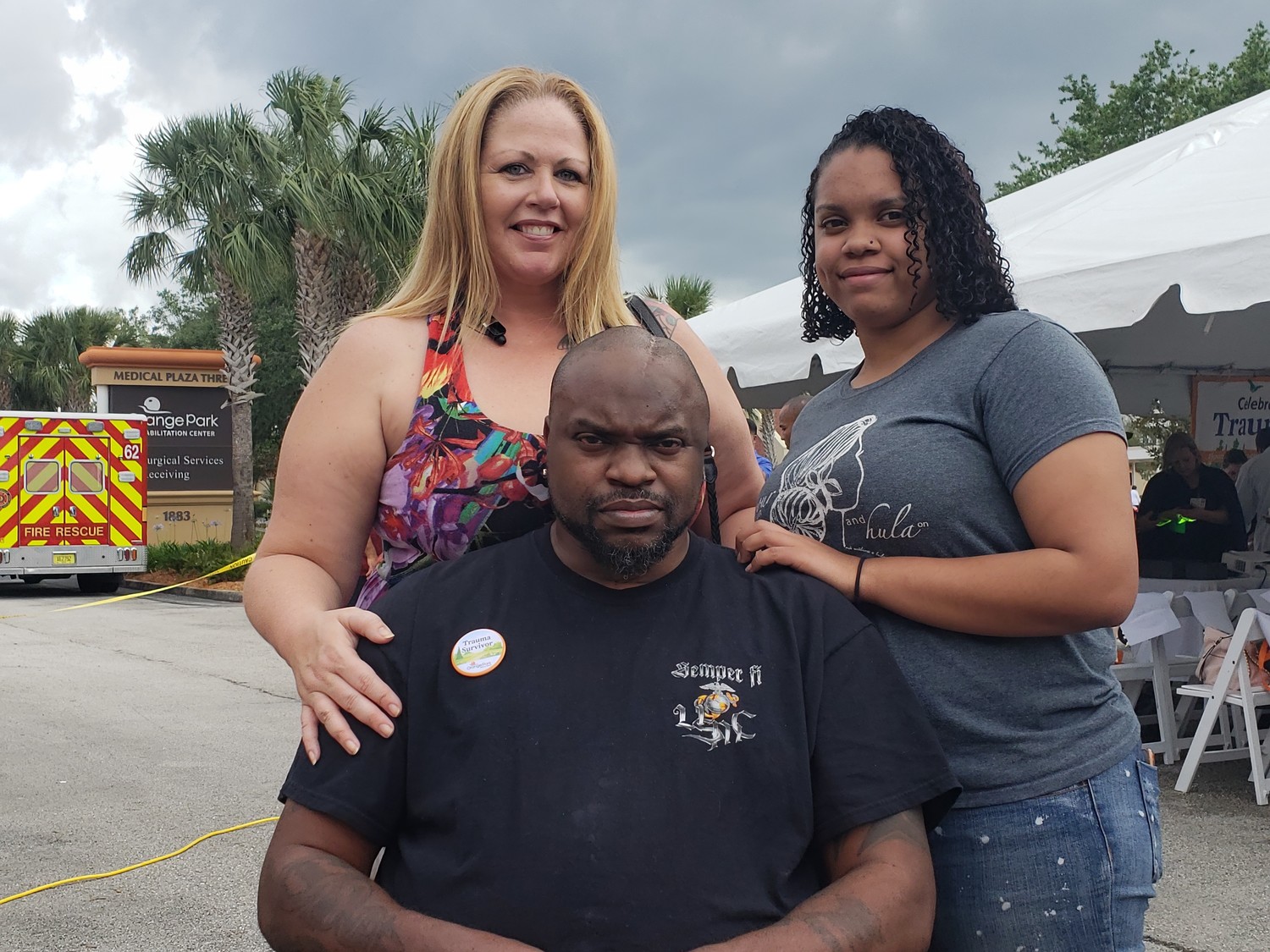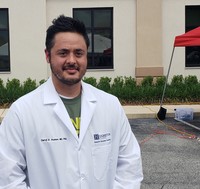Former patients celebrate life after trauma
This item is available in full to subscribers.
Attention subscribers
To continue reading, you will need to either log in to your subscriber account, or purchase a new subscription.
If you are a current print subscriber, you can set up a free website account and connect your subscription to it by clicking here.
If you are a digital subscriber with an active, online-only subscription then you already have an account here. Just reset your password if you've not yet logged in to your account on this new site.
Otherwise, click here to view your options for subscribing.
Please log in to continueDon't have an ID?Print subscribersIf you're a print subscriber, but do not yet have an online account, click here to create one. Non-subscribersClick here to see your options for subscribing. Single day passYou also have the option of purchasing 24 hours of access, for $1.00. Click here to purchase a single day pass. |
Former patients celebrate life after trauma
ORANGE PARK – Corey Wiley, 43, of Fleming Island had his life changed forever on May 20, 2017.
Wiley was riding his motorcycle on County Road 220 when a vehicle pulled out in front of him, hitting Wiley and ejecting him from his motorcycle. He was rushed to Orange Park Medical Center where he would spend almost 8 weeks, some of them in a coma. But a little less than a year later, at Orange Park Medical Center’s second annual Trauma Survivor’s Day, Wiley stood with his fiancé Sonya and his daughter Deijon as they celebrated his ongoing recovery process.
Wiley, a Marine veteran, suffered a traumatic brain injury in the accident. He suffers from apraxia, an inability to perform purposeful tasks and aphasia, the loss of ability to understand or express speech. However, while Wiley still struggles with some memory issues, his speech is improving and he is able to walk with assistance.
Wiley’s story was just one of several told at the second annual Trauma Survivors’ Day at Orange Park Medical Center on May 16, which is Trauma Survivors’ Day and May is Trauma Awareness Month.
Sarah Miller, the injury prevention coordinator for trauma at OPMC, said that the day is about bringing the survivors, their families and the trauma center staff together to see one another and talk about the recovery process.
While all survivors are invited, the response can vary.
“Some patients were able to go back to their status quo and so they don’t really want to come back and relive it all again, others aren’t ready to talk about it yet, but it can be therapeutic for some patients,” said Miller.
Some patients even see the celebration as a way to “pay it forward” in the sense of helping newer patients and talking to them about what can be a long and difficult recovery.
It wasn’t just the survivors and their families who were being honored though. Every year the hospital presents an award to a staff member as “recognition for going above and beyond.” The staff member is not told about the award ahead of time to ensure they’re surprised at the ceremony.
This year, the hospital honored physical therapist Richard Harper for his role in the early mobility program. It’s a program where therapists guide patients through therapy routines while still in their hospital beds. Harper was noted for his willingness to take on a teaching role for the other therapists and nurses.
“I don’t do anything special,” said Harper. “I just come to work and try and treat each patient as if it was my own family in the bed.”
The ceremony ended with what the hospital called a “chain of survival.” Everyone involved in the process – first responders, hospital staff, family members and the survivors themselves – all joined hands in a large circle. The circle ended with each person releasing a butterfly as a symbol of hope.
Darryl Auston, the director of orthopedic trauma, said Trauma Survivors’ Day is big for the doctors and other staff as well.
Auston said that while in normal hospital situations, the doctor and patient build a relationship over a period of time before any procedures are done, but that’s not how it works in trauma.
“Our relationship with them is backwards,” said Auston. “Days like this are how we get to know them and hear about how they’re doing.”
Auston also talked about how different the process is for the family members as well since they don’t even meet the doctors until after their loved ones are out of surgery and admitted to the hospital.
“They’re putting an insane amount of trust in us, sight unseen,” said Auston. “They’re literally trusting us with their loved one’s life without ever meeting us. That’s not something we take lightly.”
Orange Park Medical Center’s trauma center has treated more than 3,000 patients since 2016, according to Trauma Medical Director Miren Schinco.











